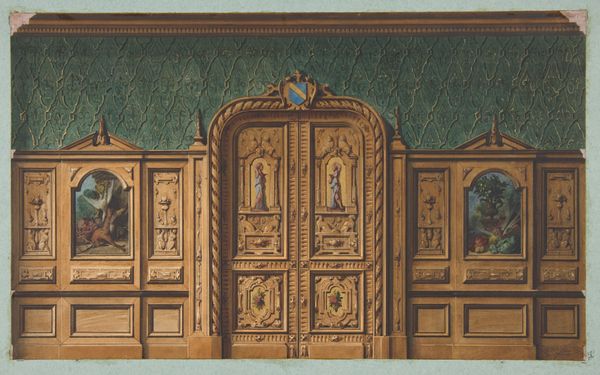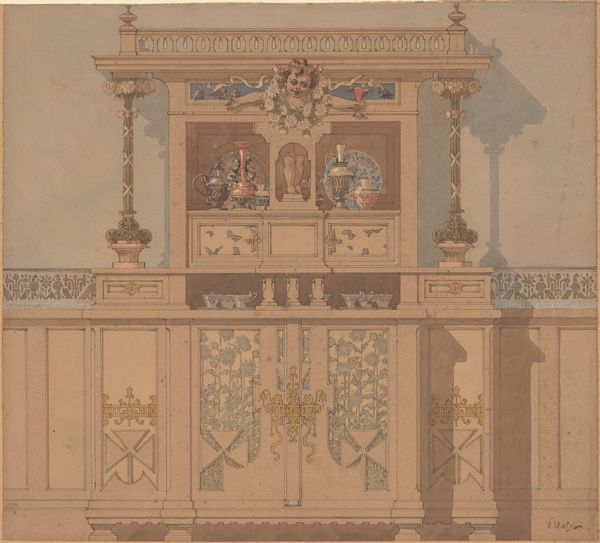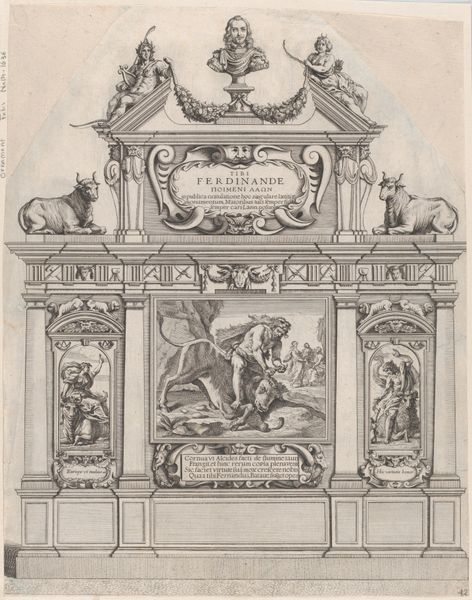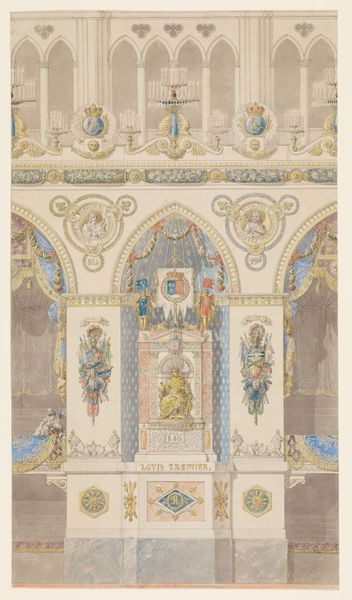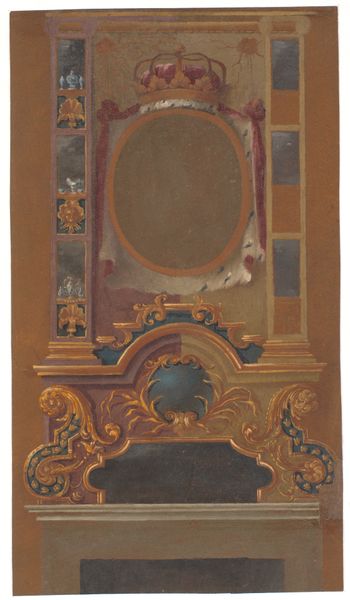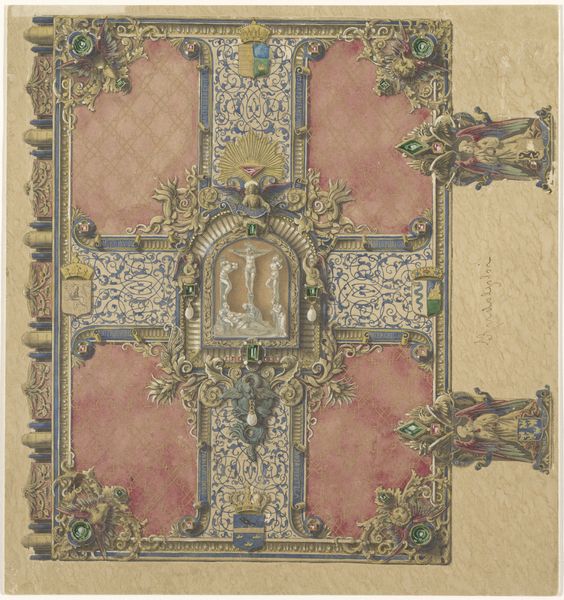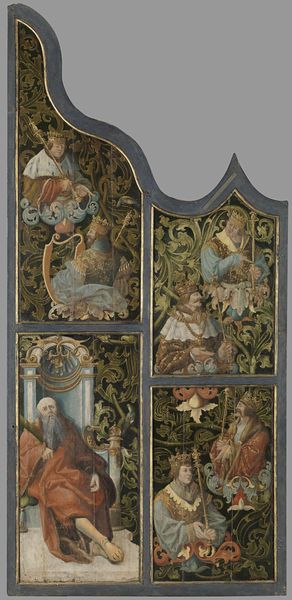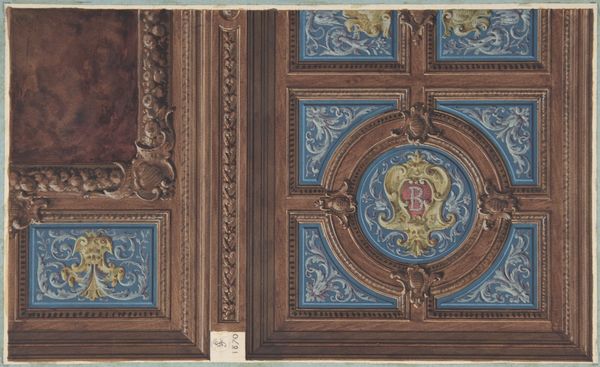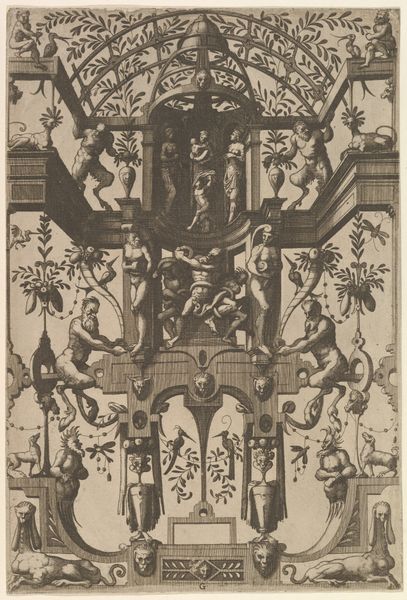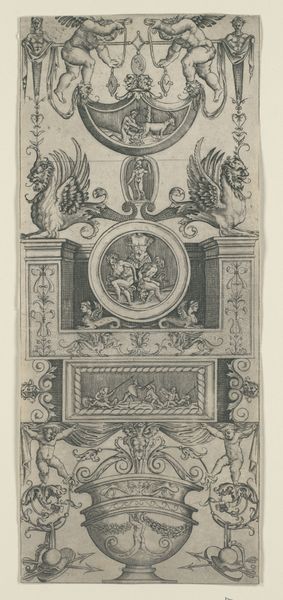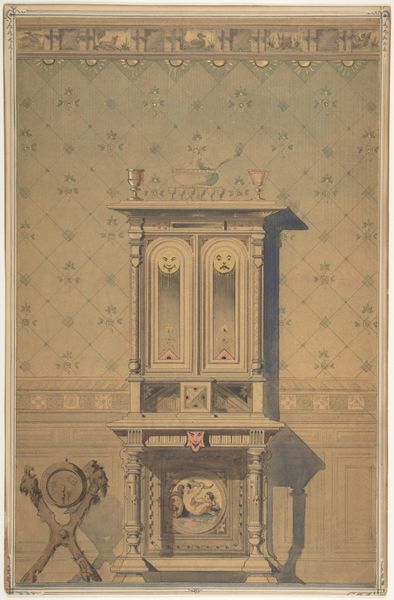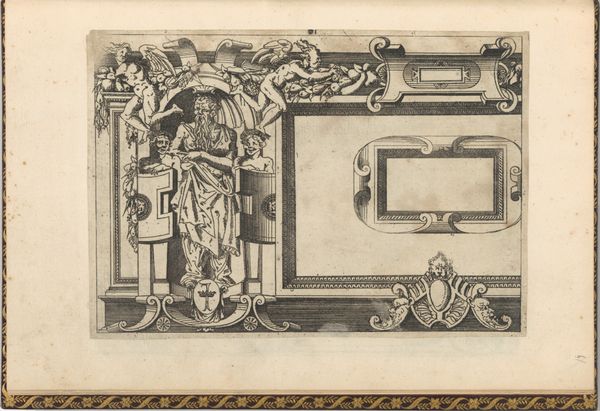
Design for painted wall decoration in the Château de Lude, Sarthe 1850 - 1900
0:00
0:00
Dimensions: sheet: 10 7/8 x 9 5/16 in. (27.7 x 23.7 cm)
Copyright: Public Domain
Curator: This watercolor drawing presents a design for painted wall decoration in the Château de Lude, Sarthe. The artist, Jules-Edmond-Charles Lachaise, executed this piece sometime between 1850 and 1900. Editor: My immediate response is to the sheer theatricality of it. The composition, with its staged central scene framed by columns and decorative panels, really evokes a sense of drama. Curator: It's definitely intended to create a certain atmosphere, linking historical narratives and decorative embellishment with elite identity. Notice how the architecture and internal scene seem designed to project an image of established power, class, and legacy through material culture. Editor: Absolutely. The framing is quite interesting, isn't it? There's the main scene of action, centrally staged between the columns and two framed, vacant panels at either side. Then, the almost incidental glimpses into upper chambers. There is a playful balance and depth there, no? Curator: Indeed. And considering the Chateau de Lude itself—a historical site that has been occupied by many families—these painted decorations contribute to the ongoing narrative and image cultivated around that space. The decoration can even signify new alliances, and old alliances in an age of new class formations. Editor: The execution itself, though—the fine lines of the columns, the miniature scenes nestled up top. The way the watercolor evokes depth. It is a striking blend of architectural precision and artistic interpretation. Curator: I find myself drawn to how these kinds of decorative schemes reflect changing societal tastes. Romanticism mingled with this decorative urge points to how elites wanted to fashion and signal an enriched identity, connecting history and art to class position. Editor: Right. It all adds layers to how we interpret the piece. Thinking purely formally, the visual dance between the empty panels and the activity in the central scene makes it dynamic, thought-provoking. Curator: In the context of historical and decorative practice, that very dance also embodies this cultural negotiation between inherited status and performative display. Editor: Seeing it this way gives me a broader perspective, thank you. Curator: Likewise. Looking through a formal lens helps solidify my insights around artistic intention within such works.
Comments
No comments
Be the first to comment and join the conversation on the ultimate creative platform.
